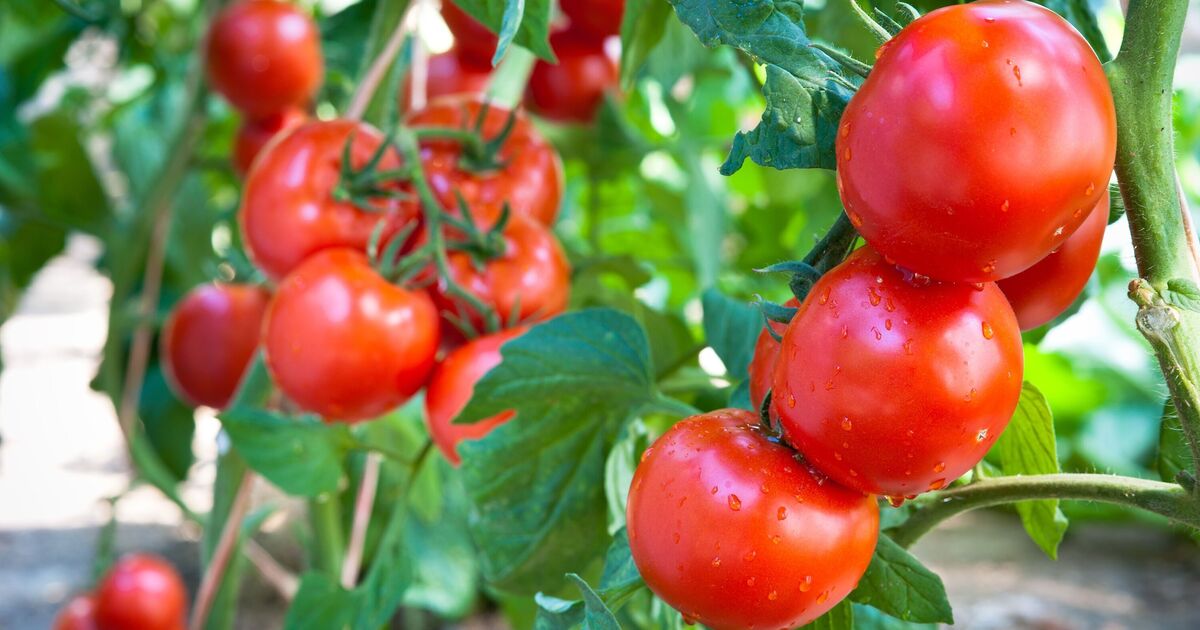Tomatoes will grow into shrubby, multi-stemmed plants that topple under the weight of their fruit if left to their own devices.
Fruit and foliage are more prone to attack by pests and disease when they’re sprawled on the ground.
However, there is one gardening task that can help avoid this, and that’s pruning.
According to Just Pure Gardening’s Reese Robbins, a seasoned gardening expert with years of hands-on experience, pruning tomato plants has many benefits aside from preventing diseases – one of which is “increased yield”.
The expert said: “Proper pruning channels the plant’s energy into fruit production, resulting in higher yields of larger, tastier and healthier tomatoes.”
With better sunlight exposure after pruning, the tomatoes will also “receive more nutrients, improving taste, colour, and texture”.
Before pruning, Reese highlighted the importance of identifying the “suckers”. Tomato plants have two primary types of stems – main stems and side shoots (also known as suckers).
The main stem grows upward, while the side shoots emerge from the leaf axils, whereas the suckers are small shoots that develop in the space between the main stem and the branches.
The suckers can “weaken the plant” by diverting energy from fruit production to vegetative growth.
To prune tomato plants “correctly”, start by pinching off the suckers when they are young and small, usually around one to four inches long.
To do so, use your fingers or a clean pair of pruning shears to make a clean cut – do this throughout the tomato plant lifecycle.
As the tomato plants grow, they will become top-heavy with vegetative growth and fruits.
Gardeners need to use stakes or a trellis system to support the main stem and prevent it from bending or breaking under the weight.
The next step is to regularly inspect the plant for any branches or leaves that appear diseased, damaged, or overcrowded – prune these to promote better air circulation and reduce the risk of fungal infections.
Thin out some of the foliage to allow better airflow and sunlight penetration to the inner parts of the plant. This helps reduce humidity and prevents diseases like blight.
As the plant matures, remove the lower leaves that are touching the ground. This prevents soil-borne diseases from splashing onto the foliage and minimises the risk of infection.










